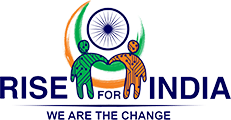Meet Raju, a nine-year old radiant boy who says he dreams of driving a car one day. The same car on which his customers come to sip a glass of tea. He claims, he makes the world’s best tea, but when asked if he wants to sell tea like his father when he grows up, he says “mujhe badi gaadi chalaana hai chashme pehnke”. Unfortunately, his father intervenes the conversation and asks him to get back to work.
Today, India has 28 million children aged between 5 to 14 years old who are engaged in work. The problem of child labor is pervasive and has an enduring impact on a young person’s future, making it one of the most important and urgent issues to address. Poverty is one of the core reasons because of which parents like Raju’s have to make the tough decision: allow their children to work and miss out school, or watch the whole family dive deeper into poverty.
Even though child labor is an age-old phenomenon, its measurement depends on how it is defined. Social and cultural views play an important role in defining the line drawn by the society between childhood and adulthood. Communities belonging to different castes and religions believe that a 10-year-old boy who plays a vital role in contributing a major part of the income to the family is not considered a child. If we look closely and analyze the issue of child labor in India, we will realize that all the major problems that our nation faces today are somehow interconnected with each other, including the problem of child labor. Lack of basic education, poverty, societal norms, healthcare, economical misbalance and several other factors play a major role in the perpetual nature of child labor.
Like every other nine-year old child in a well-to-do family in India, Raju and several others also have individual rights to education and to have a normal childhood. There are many Governmental agencies, programs and not for profit organizations like CRY, AVANI, Bachpan Bachao Andolan that work towards the upliftment of the society with the focus on child education, protection from unwanted labor, safeguarding the families of the children through funds and employment opportunities.
But as an individual part of the society, the question that stares at each face is that what contribution can WE make in order to change the conditions prevailing in the Indian society in terms of child injustice. As a part of a democratic country, it is our duty (at individual levels) to give equal rights to every innocent child who suffers from congenial poverty and consequential illiteracy.
We can all make individual efforts by simply teaching the children of the house helpers or by gathering the neighborhood kids and providing them with the basic education that we were lucky enough to get as children. One such example is of an organization called IBTIDA–“the beginning” run by Yasmin Sultana in Vasundhara Enclave, East Delhi, which gives primary education to children between the age of 6 to 15 years who live in the nearby village of Dallupura. Yasmin says, “Most of the girls come after 2 pm as they are asked by their parents to finish off the household work before going to study. They believe that for a girl child, it is important to learn household work before they attain basic education”. For them, the future of a girl child is within the boundaries of the traditional norms of becoming a homemaker.
To address the problem of child labor, it is essential to build awareness amongst the poverty stricken sections of the society about the relevance of equal opportunities of education, knowledge and their positive repercussions in terms of job opportunities and employment.
In order to attain complete development of the nation in all spheres, we must start from the roots. Children who are below 16 years of age and spend their childhood in manual, unwanted and forced labor are a part of the future of the country. If we do not make individual efforts to cut the vicious cycle of child labor that persists in India, we cannot dream of the ‘India Shining’. It has become extremely essential for everyone to address the continuing problem of child labor so that every parent is able to prioritize their child’s education before earning money, every child has a fruitful childhood and every Raju can drive a car someday.

